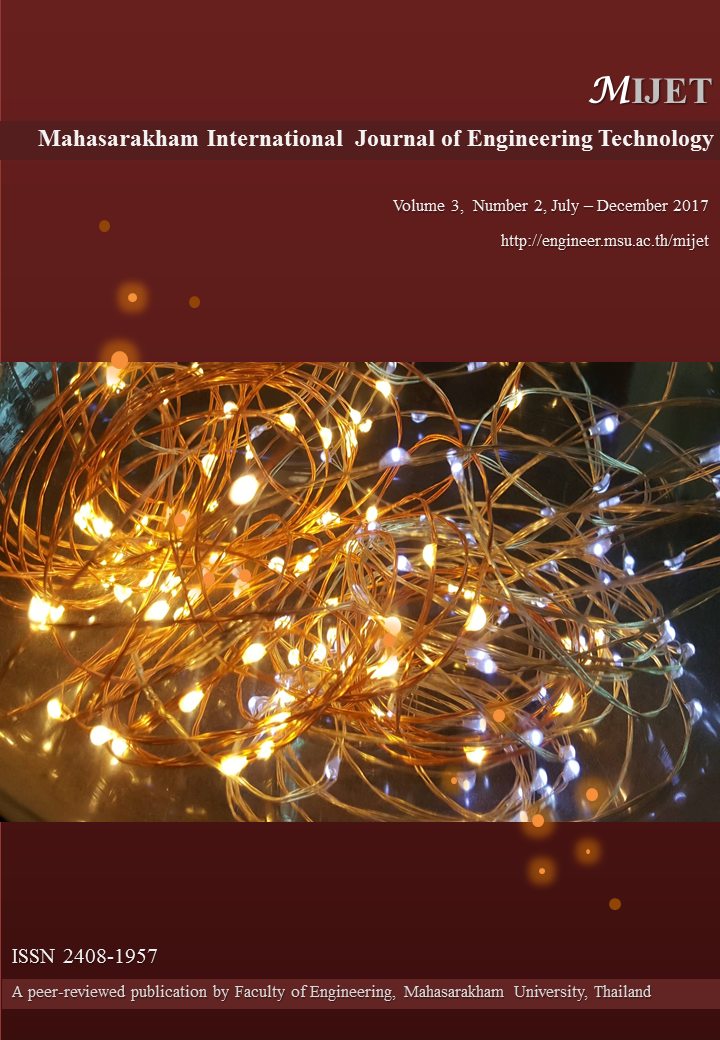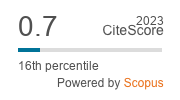Parchment Coffee Drying Using Microwave Combined with Hot Air
doi: 10.14456/mijet.2017.11
Keywords:
parchment coffee, microwave-hot air combination drying, qualityAbstract
We studied the kinetics of parchment coffee dried by microwave combined with hot air and assessed the coffee quality. Coffee beans with initial moisture content of 55%wet basis were dried to a moisture content of 10% wet basis. Drying temperatures between 60◦C and 80◦C and microwave powers from 600 to 800 W were examined. Coffee quality was assessed by the electric conductivity test: increase in both temperature and microwave power led to increasing electric conductivity. Drying at60◦C with 600W microwave power had the lowest electric conductivity of 276 micro cement per centimeter per gram. Drying at 60◦C combined with 800W microwave power showed the lowest energy consumption of 18.7 kW-hours for a 98 minute drying time. The highest energy consumption was 26.6 kilowatt-hours at 60◦C and 600W microwave power for a 145 minute drying time. Thus, considering both energy consumption and quality, drying at 60◦C combined with 800W microwave power is recommended.
References
[2] Belitz, H.D, Grosch, W., Schieberle, P. Coffee, tea, cocoa. In: Food Chemistry, 4th edn. Springer, Berlin, 2009. P. 938–970.
[3] Wei Lee L., Cheong M.W., Curran P., Yu B., Quan Liu S. Coffee fermentation and flavor – An intricate and delicate relationship. Food Chemistry, 2015, vol. 185:182-191.
[4] Schurter AG, Switzerland. 5110 EMI filter (datasheet). 4 pages. [Online] Cited 2008-06-23. Available at: http://www.schurter.cz/-pdf/english/typ5110.pdf.
[5] Borem, F.M, Marques, E.R, Alves E. 2008. Ultrastructural analysis of drying damage in parchment Arabica coffee endosperm cells. Biosystems Engineering 99: 62–66.
[6] Coradi, P.C., Borem, F.M., Saath, R., Marques, E.R. Effect of drying and storage conditions on the quality of natural and washed coffee. Coffee Science, 2007, vol.2, p. 38-47
[7] Saath, R., Borem, F.M, Alves, E., Taveira, J.H.S., Medice, R., Coradi, P.C. 2010.
Microscopiaeletrônica de varredura do endosperma de café (Coffea arabica L.) durante o processo de secagem. Ciênc. Agrotecnologia 34: 196–203.
[8] Berteli, M.N. and Marsaioli, A. Evaluation of short cut pasta air dehydration assisted by microwaves as compared to the conventional drying process. Journal of Food Engineering 68(2): 175-183 (2005)
[9] Abbasi Souraki, B. and Mowla, D. Experimental and theoretical investigation of drying behavior of garlic in an inert medium fluidized bed assisted by microwave. Journal of Food Engineering 88: 438-449 (2008)
[10] Chandrasekaran, S., Ramanathan, S. and Basak, T. Microwave food processing – A review. Food Research International 52: 243-261 (2013)
Downloads
Published
How to Cite
Issue
Section
License
Copyright (c) 2017 Mahasarakham International Journal of Engineering Technology

This work is licensed under a Creative Commons Attribution-NonCommercial-NoDerivatives 4.0 International License.








